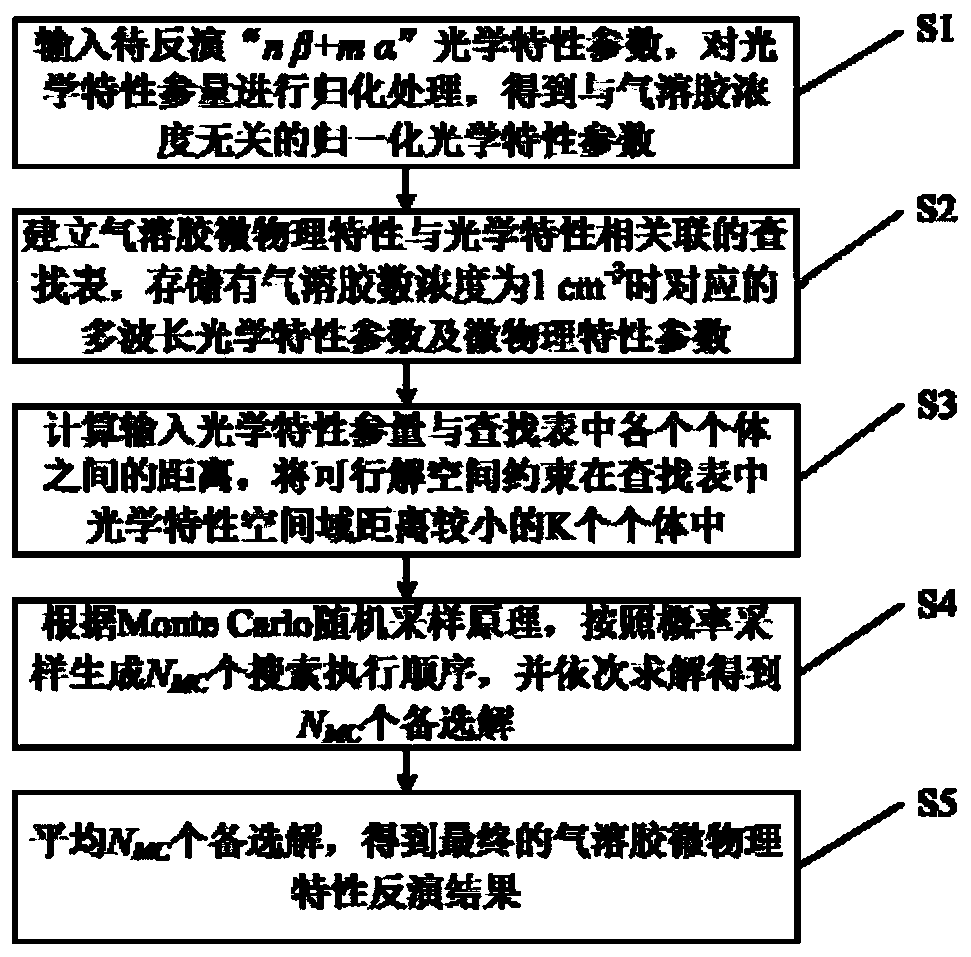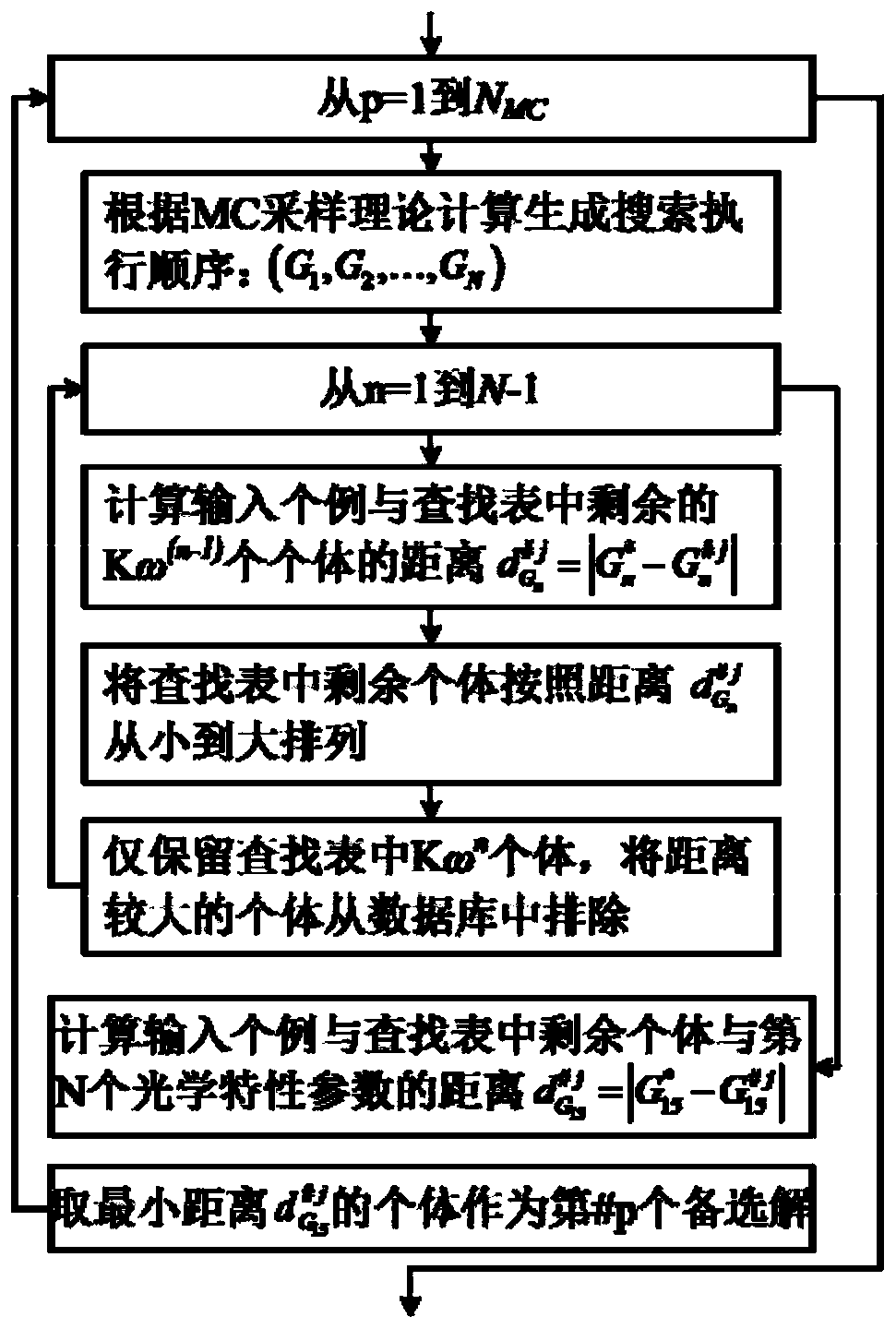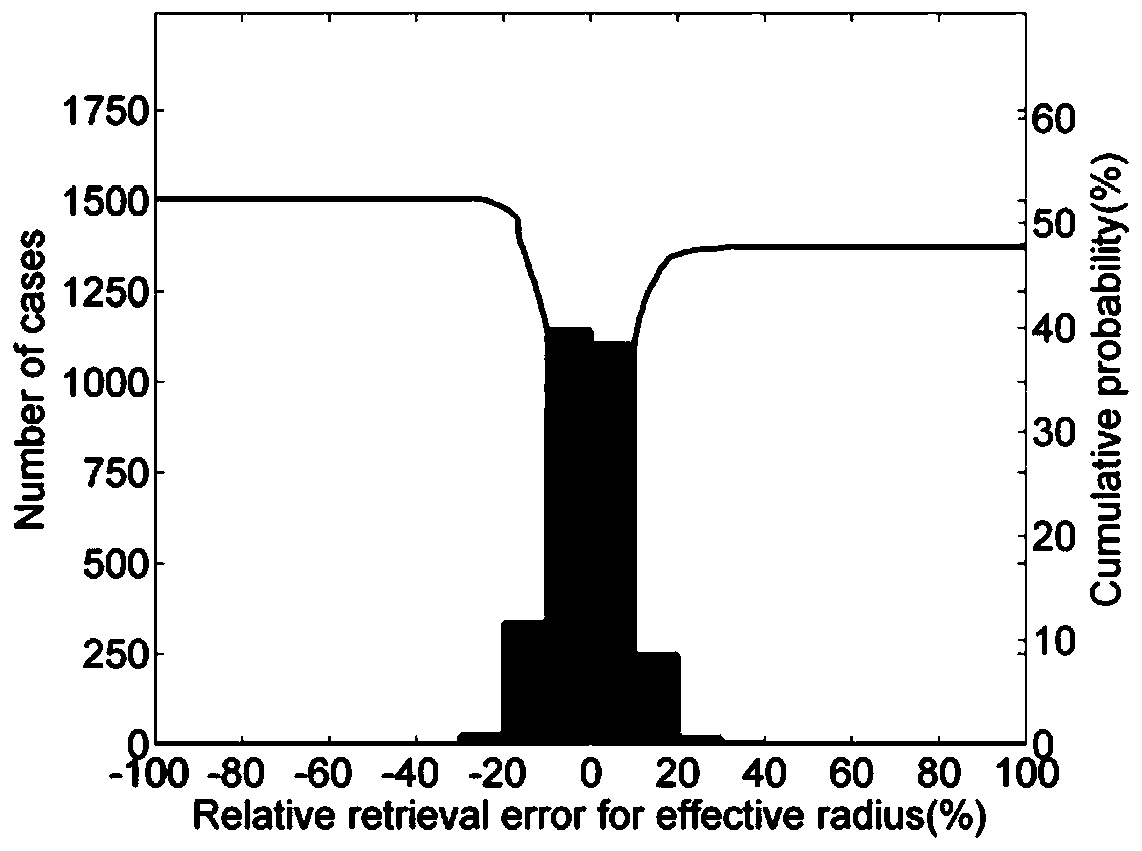Method for inverting aerogel microphysical characteristics based on multi-wavelength laser radar
A technology of lidar and physical characteristics, applied in the field of lidar atmospheric detection and inversion, can solve the problems of reducing the dependence of data lookup table values, time-consuming, low execution efficiency, etc., to achieve real-time automatic processing and analysis, and improve execution efficiency. , the effect of improving the accuracy
- Summary
- Abstract
- Description
- Claims
- Application Information
AI Technical Summary
Problems solved by technology
Method used
Image
Examples
Embodiment Construction
[0033] The present invention will be described in detail below in conjunction with the embodiments and accompanying drawings, but the present invention is not limited thereto.
[0034] figure 1 It is the overall flowchart of the inversion algorithm of aerosol microphysical characteristics proposed by the present invention, including:
[0035] Step S1: Assume that the input optical characteristic parameters (backscatter coefficient β and extinction coefficient α) come from three wavelengths (Nd:YAG laser is used as the laser light source, and the detection wavelengths are 355nm, 532nm and 1064nm) high spectral resolution lidar / Raman LiDAR, that is, n=m=3. Then N=15 normalized optical characteristic parameters can be obtained, which are respectively:
[0036] B 1 =β(λ 1 ) / β 3 ,B 2 =β(λ 2 ) / β3 ,B 3 =β(λ 3 ) / β 3 ,
[0037] A 1 =α(λ 1 ) / α 3 ,A 2 =α(λ 2 ) / α 3 ,A 3 =α(λ 3 ) / α 3 ,
[0038] S 1,1 =α(λ 1 ) / β(λ 1 ), S 1,2 =α(λ 2 ) / β(λ 1 ),S 1,3 =α(λ 3 ) / β(λ ...
PUM
 Login to View More
Login to View More Abstract
Description
Claims
Application Information
 Login to View More
Login to View More - R&D
- Intellectual Property
- Life Sciences
- Materials
- Tech Scout
- Unparalleled Data Quality
- Higher Quality Content
- 60% Fewer Hallucinations
Browse by: Latest US Patents, China's latest patents, Technical Efficacy Thesaurus, Application Domain, Technology Topic, Popular Technical Reports.
© 2025 PatSnap. All rights reserved.Legal|Privacy policy|Modern Slavery Act Transparency Statement|Sitemap|About US| Contact US: help@patsnap.com



